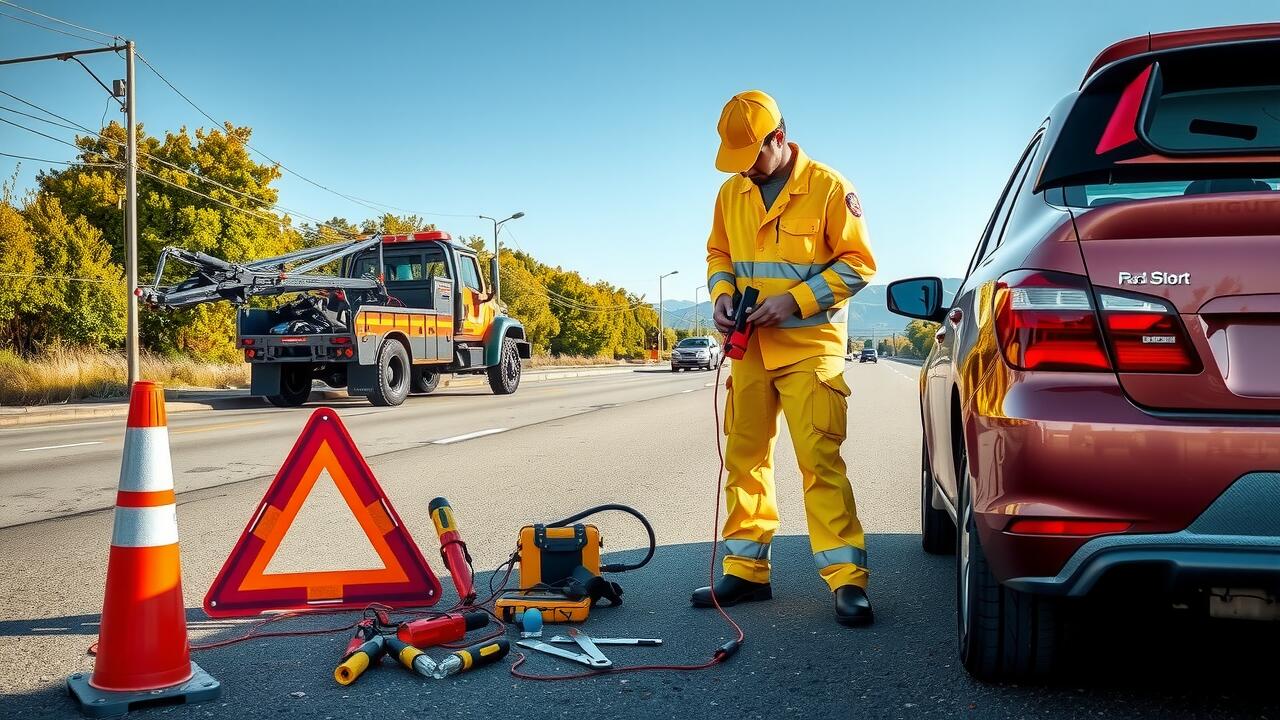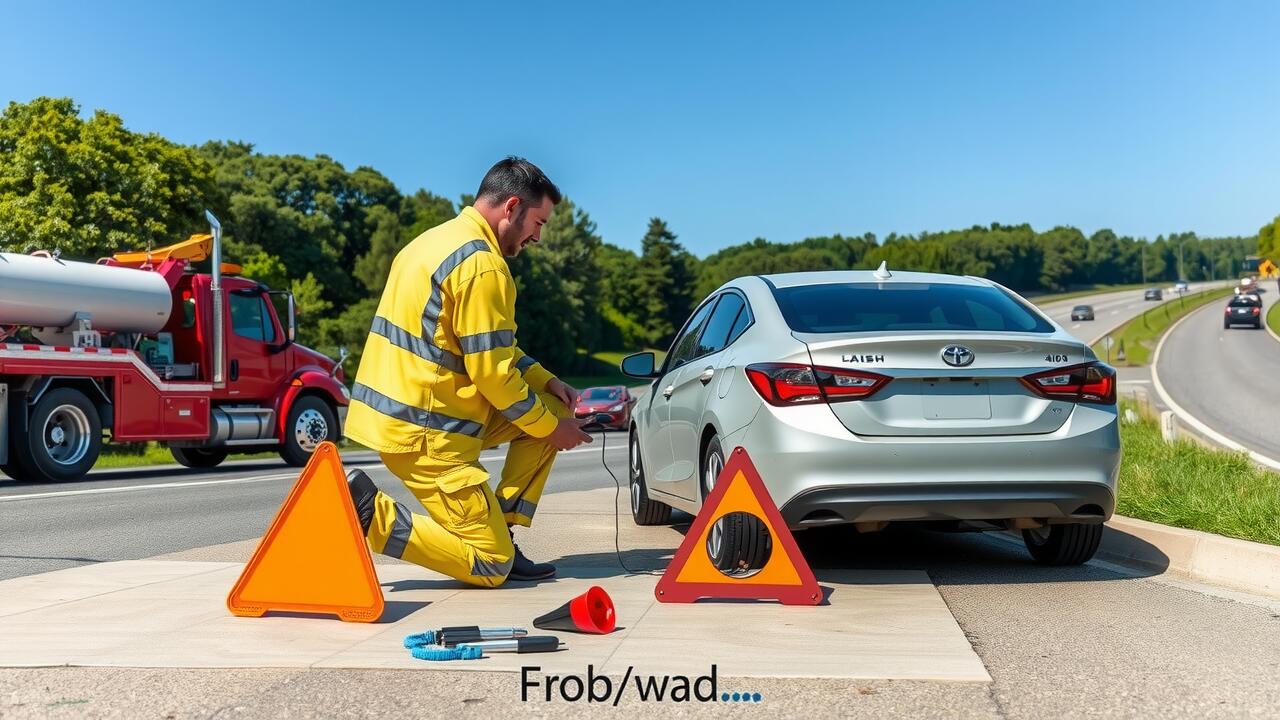
Contacting Your Insurance Provider
When you experience a vehicle breakdown, one of the first steps is to contact your insurance provider. Many insurance policies include Emergency Roadside Assistance as part of their coverage. This service can give you access to various types of help, such as towing, tire changes, and fuel delivery. Before reaching out, it’s helpful to have your policy number and vehicle details on hand to expedite the process and ensure you receive the assistance you need quickly.
While contacting your insurance provider, inquire specifically about the Emergency Roadside Assistance features of your policy. Some plans may have limitations or specific conditions that you should be aware of. Understanding these terms can help avoid any surprises during your time of need. Insurance representatives can clarify what types of roadside services are available and guide you on the next steps for getting help promptly.
How to Check Coverage for Roadside Assistance
Checking your coverage for Emergency Roadside Assistance is an essential step when you find yourself in need of help on the road. Most insurance policies have specific provisions regarding this service. It's important to review your insurance policy documents carefully to confirm if Emergency Roadside Assistance is included in your coverage. If you are unsure, contacting your insurance provider directly can clarify the specifics of your policy and any potential costs involved.
Many insurance companies offer the option to add Emergency Roadside Assistance for an additional fee. If your policy does not currently cover this, inquire about the process to obtain this coverage. Some insurers provide 24/7 support, while others might have restrictions based on your location or chosen service level. Understanding these details will ensure you have the right protection when emergencies arise, allowing you to respond promptly.
Local vs. National Roadside Assistance Services
Choosing between local and national roadside assistance services can significantly impact your experience during a vehicle emergency. Local services often provide a more personalized touch. They may offer quicker response times within their service areas since they are familiar with local roads and common trouble spots. This level of efficiency can be crucial when you need emergency roadside assistance.
National services typically boast extensive networks and resources. They often have more standardized protocols and can provide support across a broader geographical area. This can be advantageous if you are traveling long distances or in unfamiliar places. However, response times could vary depending on where you are located. Understanding these dynamics can help you make an informed decision during a roadside crisis.
Pros and Cons of Each Option
Local roadside assistance services often provide personalized attention and familiarity with the regional area. Their shorter response times can be an advantage during urgent situations. Customers may appreciate the local touch and support from community businesses. However, these services might have limited resources or coverage, which can restrict the types of assistance available.
National roadside assistance providers generally offer a wide range of services and a robust network of technicians across various locations. This can ensure more extensive coverage and a higher likelihood of getting help, regardless of where a vehicle breaks down. Nevertheless, these larger companies may sometimes lack the personal touch and could have longer wait times due to their broader service areas. Understanding these pros and cons can help in choosing the best Emergency Roadside Assistance option for your needs.
What to Expect When Help Arrives
When help arrives, especially for Emergency Roadside Assistance, a technician will typically assess your situation first. They will check the vehicle's needs and how they can provide assistance safely. This initial evaluation helps determine whether the issue can be resolved on-site or requires tow services.
After the assessment, the technician will explain the steps they will take to assist you. If it’s a simple fix, such as jump-starting a dead battery or changing a flat tire, they will carry out the necessary repairs efficiently. For more complex issues, they may arrange for your vehicle to be towed to a nearby repair shop. Knowing what to expect can ease the stress of an unexpected roadside breakdown.
Common Procedures Followed by Assistance Technicians
When a roadside assistance technician arrives, they typically begin by assessing the situation. They will often confirm the driver’s issue, whether it’s a flat tire, dead battery, or another mechanical problem. After gathering this information, the technician will explain the steps they will take to resolve the issue. This clear communication helps ensure that the driver knows what to expect throughout the process.
Following the assessment, the technician will prioritize safety by putting up warning signs or cones to alert oncoming traffic. If a tire change is needed, they will safely lift the vehicle and replace the flat with the spare. In the case of a battery jump-start, they will connect jumper cables in the correct sequence to avoid any mishaps. The entire process is part of the Emergency Roadside Assistance service designed to get drivers back on the road efficiently and safely.
FAQS
What should I do first if I need immediate roadside assistance?
The first step is to safely pull your vehicle off the road if possible, then call your insurance provider or a local roadside assistance service for immediate help.
How can I find out if I have roadside assistance coverage?
You can check your insurance policy documents or contact your insurance provider directly to inquire about your coverage for roadside assistance.
What are the differences between local and national roadside assistance services?
Local services may offer quicker response times and personalized service, while national services often provide broader coverage and resources but may have longer wait times.
What can I expect when the roadside assistance technician arrives?
When help arrives, the technician will assess your situation, explain what they plan to do, and follow common procedures such as jump-starting your battery or towing your vehicle if necessary.
How long will I have to wait for roadside assistance to arrive?
Wait times can vary based on location, time of day, and the service provider. Typically, you can expect help to arrive within 30 minutes to an hour.
